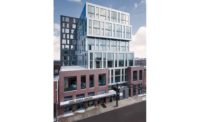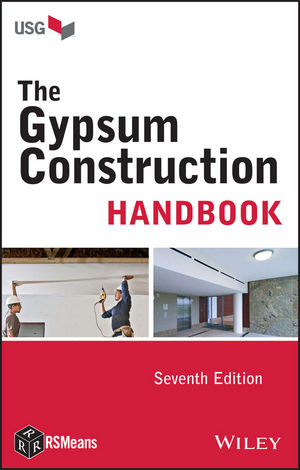We have all seen the looming framed structures of scaffolding. Standing networks of bare steel frames, an intertwining artwork, built as a working platform for a cladding yet to be installed. For many years, this is how we clad our structures, in situ, a cycle of steel, cement, studs, scaffold, cladding, rinse and repeat until you reached the sky.
As any contractor can tell you, scaffolding is a labor-some form of construction. It’s sort of a project within a project, a structure, to build structure. It takes time and a professional crew to erect the said structures to be strong and safe for the part-time inhabitants. For a large part of our cladding construction, scaffold is really the only answer, the only option, unless you are an EIFS contractor.
Something was Missing
It was the freshman years of my EIFS representative career when Las Vegas was booming with new structures that were tall, massive, elaborate and specified to be clad with their transformative EIFS claddings. The problem was there wasn’t enough scaffolding to erect around all of the buildings. A quantity requirement was further taxed by the sheer height of these structures. Enter the EIFS panel.
Now, I don’t really know the origin of the first panelized EIFS cladding. I do know there were some types of panel products the EIFS manufacturers had, but none of them to the degree of what was being built in Las Vegas. These panels in Vegas were being “engineered” for the exterior cladding. The major contractors there had begun an assembly of panels, each complete to the extent that the panel—when placed on the building—was a finished exterior. I remember seeing a bare floor one day and an EIFS cladding around the same floor the next. During the night, the contractors had “flown” the panels into place. In some instances, the panels were large enough to span two floors.
The Process
The process was simple in that all the exterior framework, sheathing and cladding were performed on the ground. Some contractors had dedicated yards and shaded structures on their properties to perform this work; others did it right on site. In any situation where panels were being built, the processes were very similar.
First, a steel framework was constructed in a jig that ensured a true and straight panel. The workers became adept at the repetitiveness of this task and after a short time were spitting them out like sunflower seed shells.
The frames then moved to another staging area where workers would apply the sheathing and flashing. Each phase to this point would be inspected for code compliance, stamped with some sort of location identifier and shipped to the plasterer’s area. Because a lot of the panels were duplicates, the plasterers could pre-cut foam and speed up their installation process.
Then came the base coat and mesh, followed by the finish. The nice thing about doing panels was that they were set horizontally at waist height, so there was no bending. One could reach most of the areas from outside the perimeters or pop up through a window opening to reach the middle areas. For the large panels, workers would literally climb on top of the panel to do the work. The finish was usually applied by hand and when spray application was called for, the panels would be hoisted to a vertical position to ensure color consistency from spraying at the same angle. Still, other companies did all the plasterwork on panels in the vertical position. The rule being there is no rule, vertical or horizontal, at an angle—it all works for EIFS applications.
What can Stucco do?
In case you are wondering if this can be done with stucco, the answer is yes. The convenience of working on a panel in any orientation is not the same as EIFS however, and once you apply the mud, you can’t move the panel until the stucco cures. Also, stucco panels are subject to an increased likelihood of cracking during transportation and placement, and any other time they are moved. Oh, and they weigh a lot more.
Conclusion
Today, the EIFS panel method of cladding construction has once again become popular. Most of the major EIFS manufacturers have proprietary EIFS panel programs. The size of the panels has gotten larger too. In the past, the length of an EIFS panel was limited to the length of a semi-truck bed. Since the beds have gotten longer, so have the EIFS panels. However, the building logistics of cladding a specific dimension is what really determines the size of the panels. There is no worry about exterior corner joints because panels can be constructed to turn the corner. Each panel is sealed around the perimeter with a sealant joint, usually a double joint, to the surrounding panels. The panels are engineered to be welded into place at the edge of slab. During the pouring of a floor, attachment points are poured into place specifically for the exterior panels.
As for window placement, sometimes they are installed on the ground and sometimes, after the panel is placed. One of the newer trends is to also have the rough electrical in place with pigtail plug-and-play connections at the perimeters. The interior drywall and finishes are not placed on the panels until after they are attached on the building because the attachment points are within the wall cavity and need to be accessible. All in all, panel erection is a very efficient way to clad a building. Plus, there is the consideration of the ability to apply EIFS products in a semi-controlled environment (for the indoor shops, a fully controlled environment).
As a not-so-subtle fan of EIFS, I am continually amazed at the versatility of this cladding. Don’t get me wrong, I love stucco and in my heyday, did way more stucco than EIFS. But when I see the ingenuity of applicator contractors who continue to perform outside the proverbial box when EIFS is the chosen cladding, I take a respectful bow. That’s two fist pumps to the chest for you EIFS, bravo, bravo.










